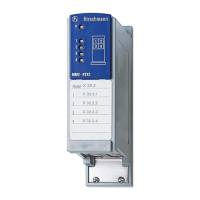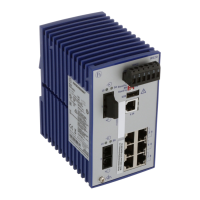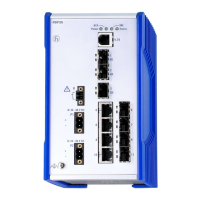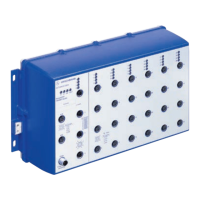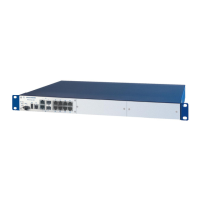28
PowerMICE
Release
01
04/2014
6 – Switch 6, position ON, function: service mode
7 – Switch position ON
8 – Switch position OFF
9 – Switch 5, position OFF, function: software configuration
10 – Switch 2, position OFF, function: module 1, port 1 and port 2
Before starting operation of the device, check whether the default settings
of the DIP switch correspond to your requirements.
2.2.6 Adjusting the DIP switch settings on the
MM20-A8A89999SAHH media module
With the 3-pin DIP switch in the bottom panel of the MM20-A8A89999SAHH
media module, you enter settings for the SQE test function and for monitoring
the DTE voltage.
Note: Before starting operation, check whether the device in question
operates the transceiver with or without an SQE test.
Before starting operation of the device, check whether the default settings
of the DIP switch correspond to your requirements.
2.2.7 Connecting the MM22-T1T1T1T1 PoE media module
The MM22-T1T1T1T1 PoE media module with PoE voltage (48 V DC safety
extra-low voltage) is supplied with power via an external power supply unit.
The PoE voltage is fed into the 3-pin terminal block of the PoE media module.
The twisted-pair cables at ports 1 to 4 are supplied with PoE voltage via the
spare pairs (pins 4 & 5 and 7 & 8 of the RJ45 sockets).
Note: Only use the Hirschmann RPS60/48V EEC power supply unit to
supply the PoE voltage.
Make sure that the external power supply unit you use to provide the PoE
voltage fulfills the following basic prerequisites:
Insulation requirements according to IEEE 802.3af (insulation
resistance 48 V output to “rest of the world” 2250 V DC for 1 min.).
Output power < 100 W.
Current limitation < 2 A.
The power supply unit and the PoE media module form a limited power
source according to IEC60950-1.
The external PoE power supply unit must be able to provide the power
for the connected PDs.
Power supply unit RPS60/48V EEC fulfills these requirements.

